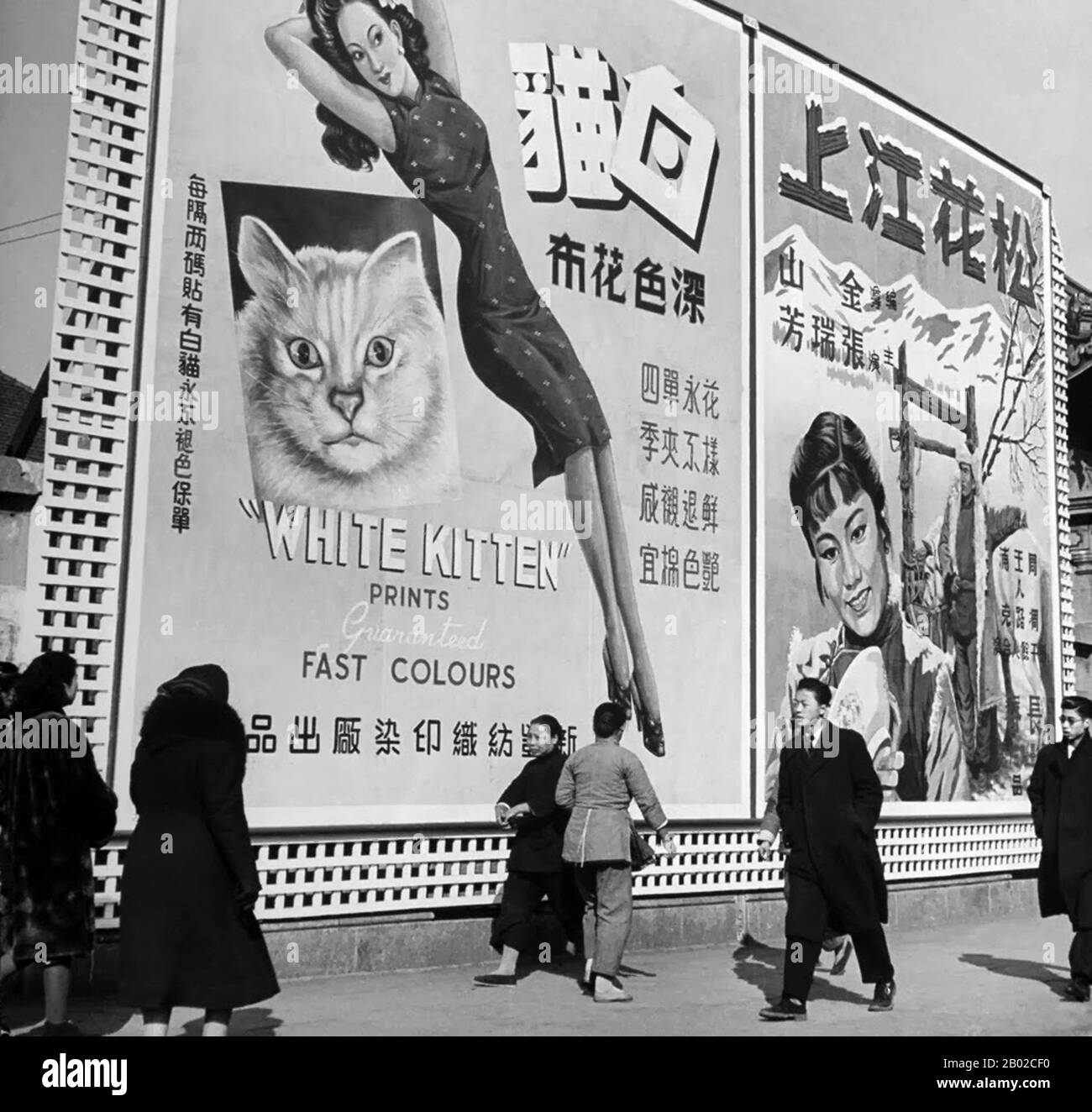International attention to Shanghai grew in the 19th century due to its economic and trade potential at the Yangtze River. During the First Opium War (1839–1842), British forces temporarily held the city. The war ended with the 1842 Treaty of Nanjing, opening Shanghai and other ports to international trade. In 1863, the British settlement, located to the south of Suzhou creek (Huangpu district), and the American settlement, to the north of Suzhou creek (Hongkou district), joined in order to form the International Settlement. The French opted out of the Shanghai Municipal Council, and maintain

Image details
Contributor:
CPA Media Pte Ltd / Alamy Stock PhotoImage ID:
2B02CF0File size:
50.2 MB (1.1 MB Compressed download)Releases:
Model - no | Property - noDo I need a release?Dimensions:
4300 x 4083 px | 36.4 x 34.6 cm | 14.3 x 13.6 inches | 300dpiDate taken:
21 November 2013Photographer:
Pictures From HistoryMore information:
This image could have imperfections as it’s either historical or reportage.
International attention to Shanghai grew in the 19th century due to its economic and trade potential at the Yangtze River. During the First Opium War (1839–1842), British forces temporarily held the city. The war ended with the 1842 Treaty of Nanjing, opening Shanghai and other ports to international trade. In 1863, the British settlement, located to the south of Suzhou creek (Huangpu district), and the American settlement, to the north of Suzhou creek (Hongkou district), joined in order to form the International Settlement. The French opted out of the Shanghai Municipal Council, and maintained its own French Concession. Citizens of many countries and all continents came to Shanghai to live and work during the ensuing decades; those who stayed for long periods called themselves 'Shanghailanders'. In the 1920s and 30s, some 20, 000 so-called White Russians and Russian Jews fled the newly established Soviet Union and took up residence in Shanghai. By 1932, Shanghai had become the world's fifth largest city and home to 70, 000 foreigners.